Lorino
© Charles XelotThe village of Lorino is a small settlement of 2000 inhabitants on the edge of the Bering Sea, in the Chukotka region of Russia. The inhabitants of this village live mainly from hunting and fishing. Their preys are whales, walruses and seals. They have quotas given by the International Whaling Commission. As the largest settlement of Chukchis of the area they have the biggest quota : 50 grey whales and 350 walruses per year.
The economic conditions are very difficult: one-third of the village has no work, wages are very low and staple food is very expensive. Thus the survival of the inhabitants depends largely on a group of professional and organized hunters. About fifty men are, like in Soviet times, divided into six brigades. They have wages from the local administration and the boats are the property of the community. Fuel and weapons are also given. The product of their hunt is freely distributed to the villagers, the sale is strictly prohibited and severely punished. The hunt is done on small aluminum craft and it is dangerous. Hunters die at sea every year. During the season, starting in April/May and finishing in October, they are almost everyday at sea. The excess is stored for winter.
The only things the village export are crafted sculptures made of bones and tusks. Send to expansive shops in Moscow the revenue of this sale helps to pay the hunters.
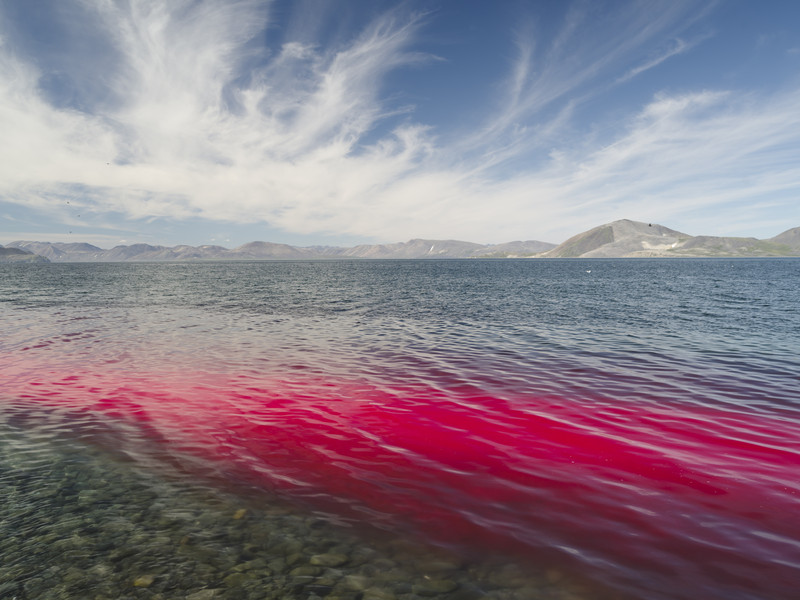


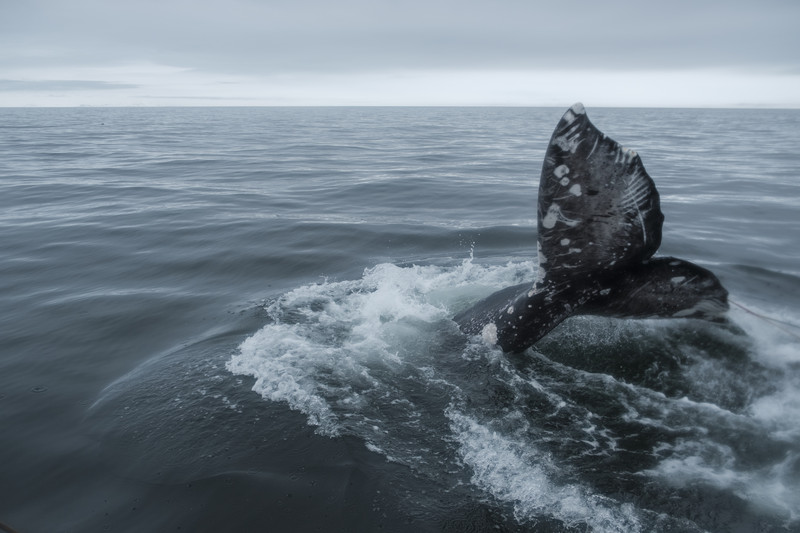
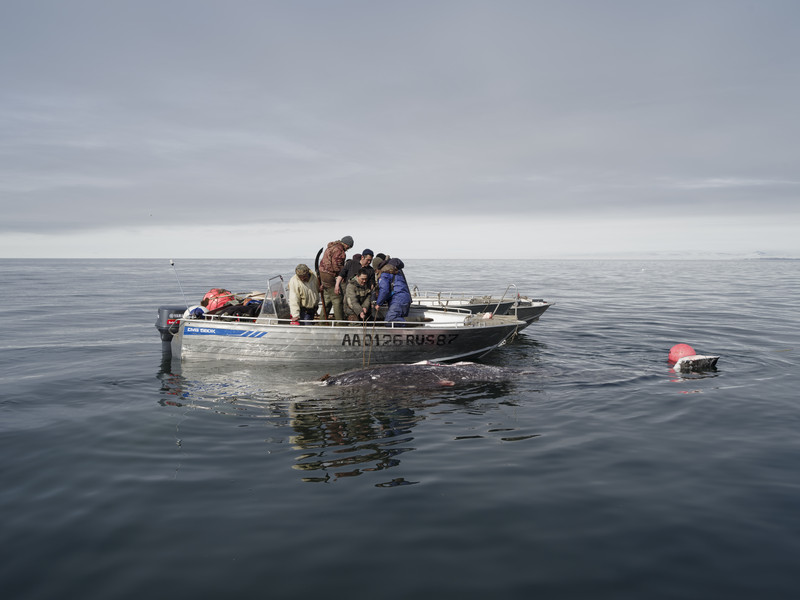

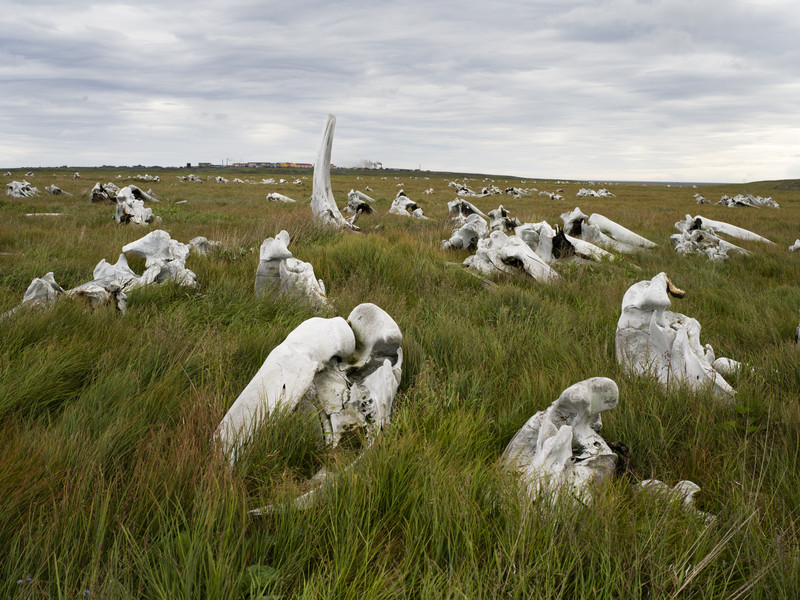

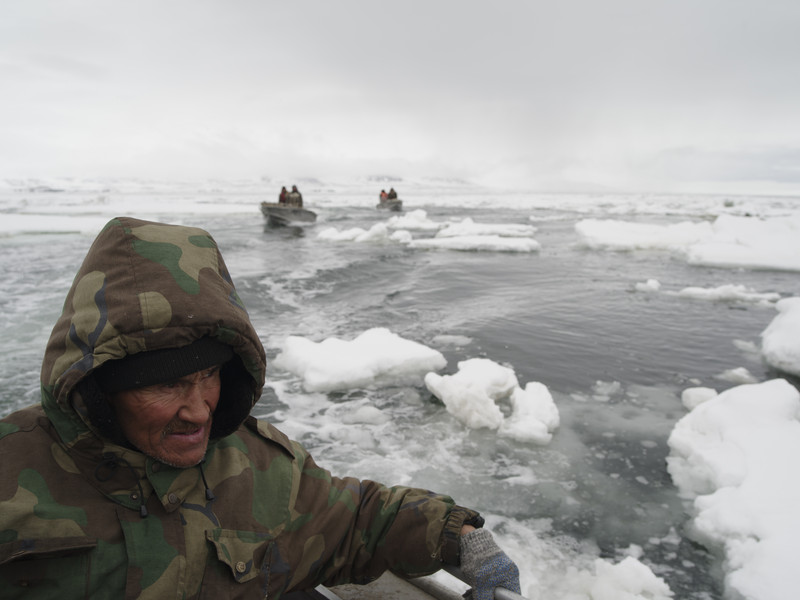
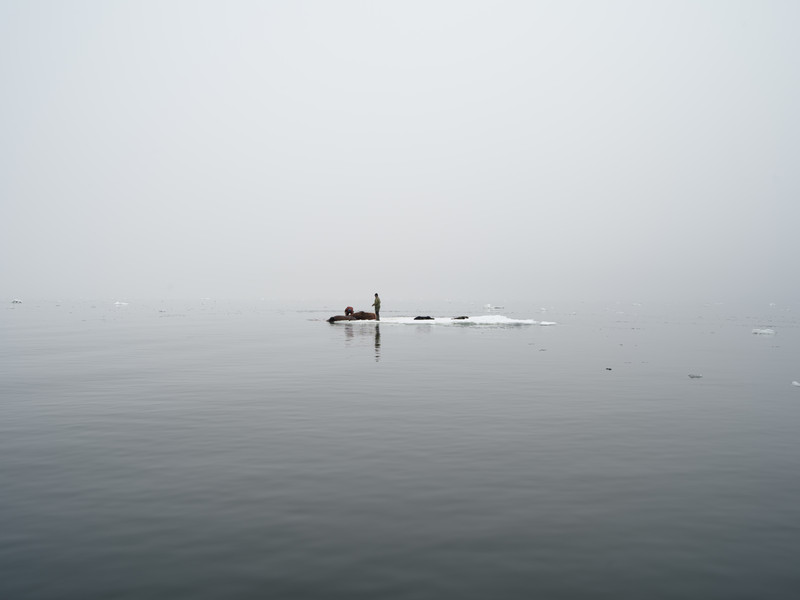
This way of living is endangered by the climate change : there are less and less ice forcing hunters to go more far at sea for their spring hunt. The permafrost is melting and slowly the cost is falling in the sea putting at risk the very existence of the village.
click to view the complete set of images in the archive
